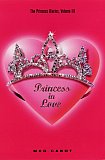
One might expect that the best target audience for an e-book would be children or teens. Going on the assumption that this demographic group has the most potential to be competent with this technology, publishers have attempted to create e-books of popular novels. One example is the third book in Meg Cabot’s Princess Diaries series, “Princess in Love”. Available through Amazon and other online vendors, “Princess in Love” is available in various ebook formats for as low at $5.95 U.S. (see http://www.ebookmall.com/ebook/130612-ebook.htm) with free downloading of the ebook reader, Palm Reader. Amazon.com offers “Princess in Love” for $5.95 U.S. as well, and offers a free download of Microsoft Reader.
Has it been successful? Quite simply, the answer is no. The reasons are varied.
One of reasons is because of the complexity of the technology. Readers need to be downloaded and system requirements are strict as to what can be downloaded where. E-books as a rule are encrypted by the publisher to disallow printing. So the only place for a purchaser to view their e-book is on the computer.
But the main reason why e-books haven’t been hugely popular among the younger set is the same reason why adults haven’t been quick to embrace e-books: it is still easier and more convenient to read a book in print than on the computer. As librarian Cindi Carey, Lacey Branch, Timberland Regional Library, WA. stated in a Library Journal article from 2003, “people want the tactile experience of reading a book."
There is growing concern as well for the amount of time that children already spend on the computer, and the physical effects of this activity on the still-maturing eyes of a child. But that concern could apply to all computer users regardless of age. Even high resolution computers cannot provide a 3-dimensional experience that a book does. The computer screen does not bend and fold nor can you as easily adjust distance between the words and your eyes as you can with a book. Tactile and emotional experiences aside, a book on a computer is quite simply a more physically demanding experience on the eyes, body, and even the brain.
There is even a syndrome coined for excessive computer use – computer vision syndrome. The statistics are already high for the number of children who need corrective lenses because – experts believe – of eye strain due to extensive computer use. This may significantly slow the promotion of e-books to children.
So who is the real market for e-books? Despite the physical concerns, some see children younger than grade three as the most promising audience for e-books. Together with read-alouds, animations, and shorter texts, the picture e-book industry may offer a larger experience for children than the print format.
Have you made use of any child-related e-book technologies?
Second question: Are you aware of any children or teens who have downloaded and read an e-book? Can you see youth being interested in this technology?




